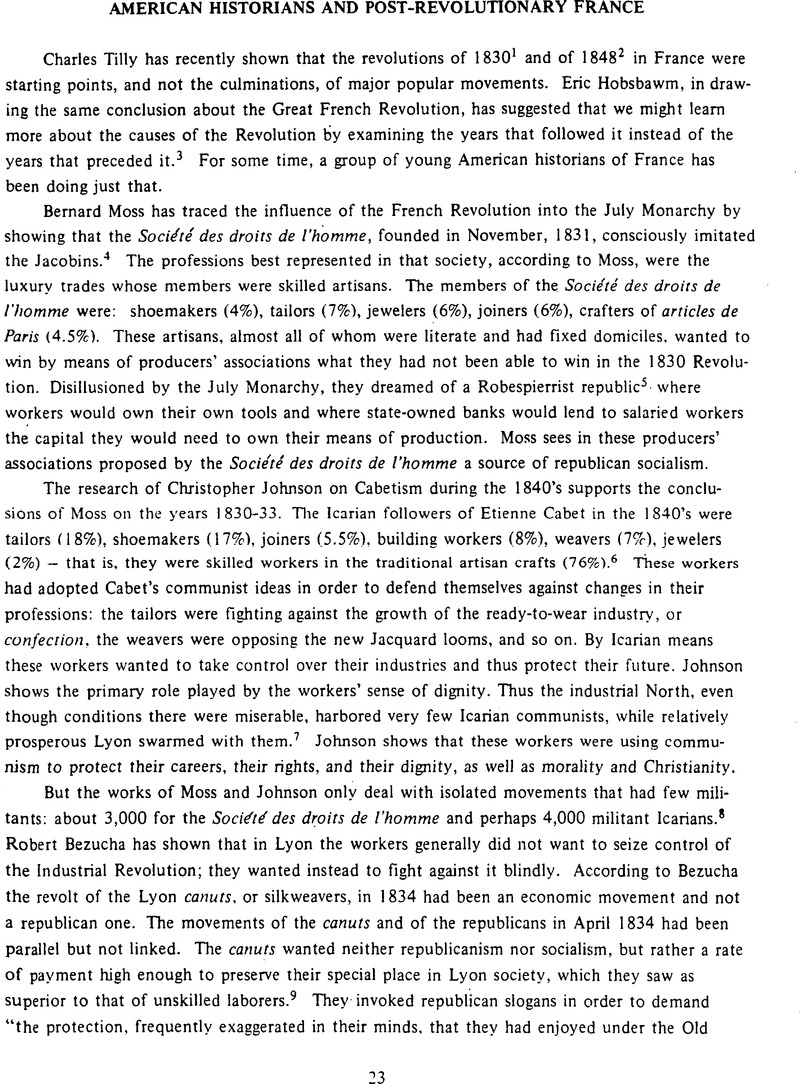9.Bezucha, Robert J., “The ‘Preindustrial’ Worker Movement: The
Canuts of Lyon,” in
Bezucha, Robert J., ed.,
Modern European Social History (
Lexington, Mass.:
D. C. Heath and Company,
1972),
118. See also Bezucha, “Aspects du conflit des classes à Lyon, 1831–1834,”
Le mouvement social, no. 76 (1971), 5–26; Bezucha,
The Lyon Uprising of 1834: Social and Political Conflict in the Early July Monarchy (Cambridge, Mass.: Harvard University Press, 1974); and Bezucha, “The Revolution of 1830 and the City of Lyon,” in John M. Merriman, ed.,
1830 in France.
Google Scholar 




